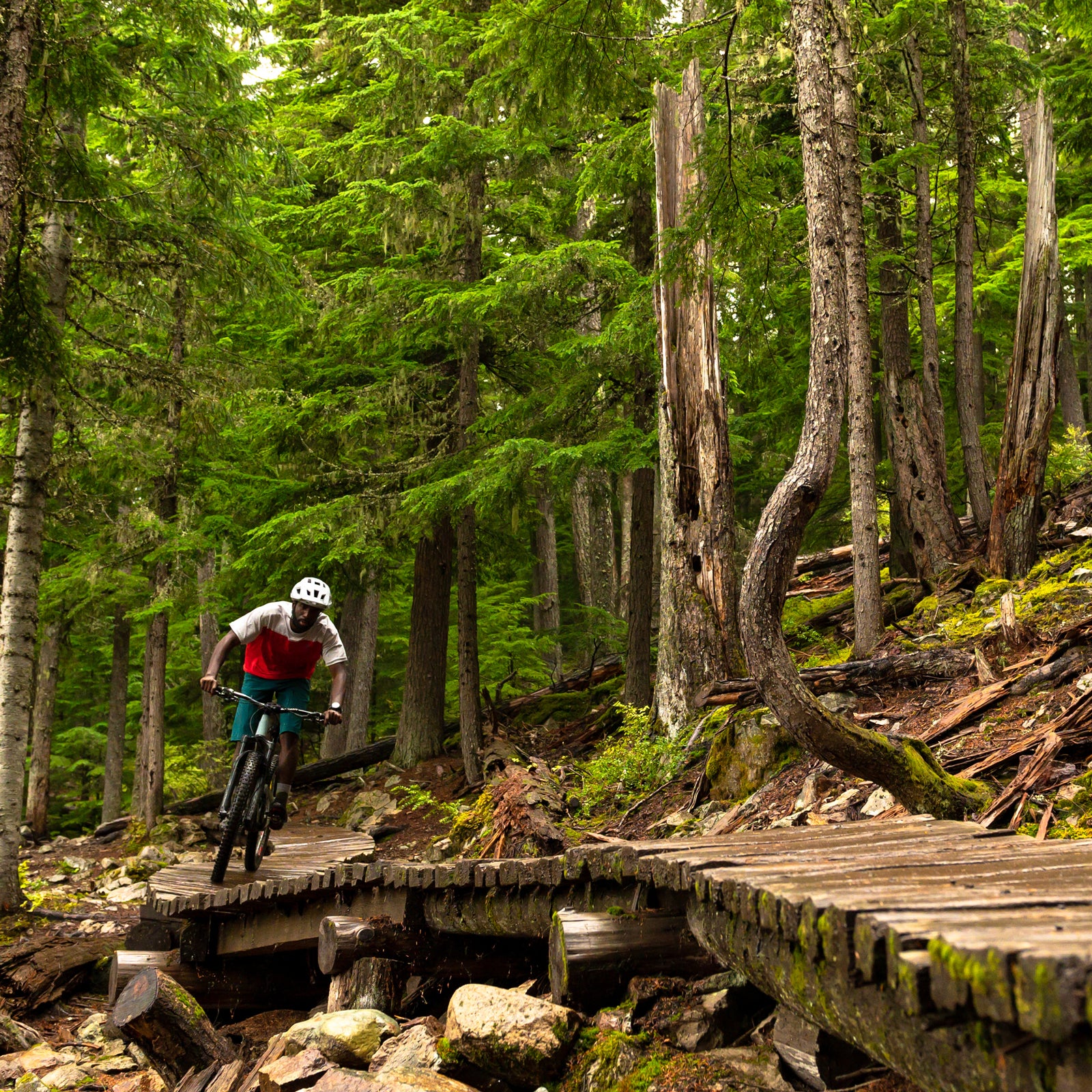Every year,��new��game-changing cycling technology comes out and propels us into the future of what’s possible on two wheels. This is not limited to the bicycles themselves.��A��helmet is��among the most��important pieces of any cycling kit. Brands often spend years developing and testing new combinations of materials and construction methods in an effort to move the needle on what’s cool, functional, and safe.
Mountain biking in particular has a greater variety of riding styles than road cycling��and, as a result, more helmet choices, from full-faced options for downhill riders to aerodynamic, breathable lids for cross-country athletes, who exert��most of their energy on the uphill.
To find the best mountain-biking helmets on the market, we tested 28 different models from 11 brands in four main categories: trail, downhill, hybrid, and budget (those less than $150). We picked the ones that were the most comfortable and offered��more functional features than their��competitors.
How We Tested
Our group of testers included eleven��men and five women, representing a range of skill levels and riding styles, from social weekend warriors to former��racers��in all disciplines. To avoid crowds while maximizing the number of laps we could take with each helmet, we conducted our test on a private, hand-built backyard trail network in the foothills of Boulder, Colorado. Our test route featured a rocky fire-road climb to a steep downhill course and some cross-country offshoots. We all came together on multiple summer evenings to bang out laps, compare helmets side by side, and swap notes while filling out digital feedback forms on-site. We evaluated each helmet based on fit, comfort, features, ventilation, peripheral vision (particularly on the full-face helmets), weight, protection, and adjustability.
Best Trail Helmet
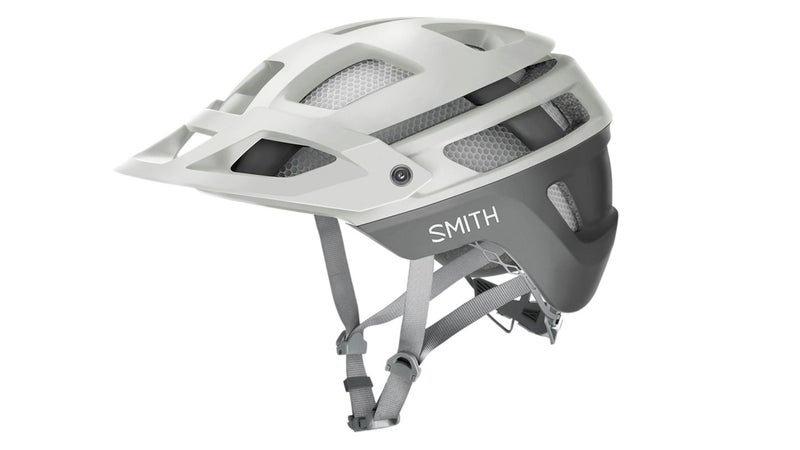
Smith Forefront 2 ($230)
Pros:��A comfortable fit, with an integrated sunglasses holder for climbing
Cons: Koroyd inhibits itch-scratching through the vents
Trail riding involves a bit of everything: long climbs, fast and technical descents, and rolling hills. So ventilation and uphill comfort can be just as important as downhill protection. The takes it all into account, starting with Koroyd, a honeycomb-like copolymer layer made of thin��plastic cylinders that crush on impact to disperse energy. It extends around the entire inside of the helmet, boosting both safety and breathability. The material is so airy that Smith even used it to fill the vents; as a result, they are exceptionally wide and yet mitigate��the risk of sharp tree branches poking through.��Testers noticed that the Smith vented better than any other helmet when standing still. When testers started moving, however, that protective material filling the vents meant that airflow was merely on a par with, not better than, competing models. A few also noted that the Koroyd prevented them from reaching a finger through the vents when their scalp was itchy, which happens frequently when you start to sweat. But that’s a small price to pay for the top-notch coverage-to-ventilation ratio that the Forefront 2 offers.
Testers with regular-to-large-size��heads, who tend to have difficulty finding lids that feel right, universally agreed on the Forefront 2’s superior fit. “I loved how light and comfortable this helmet is,” one noted. “My favorite quality in a helmet is not having to think about it, and with this one, I forgot it was there. The ratchet-tightening system locked in great, with no movement.”
Runner-Up
The ��($300), which has its own low-density, latticelike protective material, seemed to vent a bit better than the Forefront 2 while moving��and offers coverage farther down the back of the head. Testers loved the one-handed magnetic buckle closure.��However, although both have rotational impact protection systems, the Forefront 2 ultimately won out on account of features like��integrated eyewear-storage slots, a camera and light mount, and a three-position adjustable visor that blocks sun or flips up and out of the way.
Best Downhill Helmet
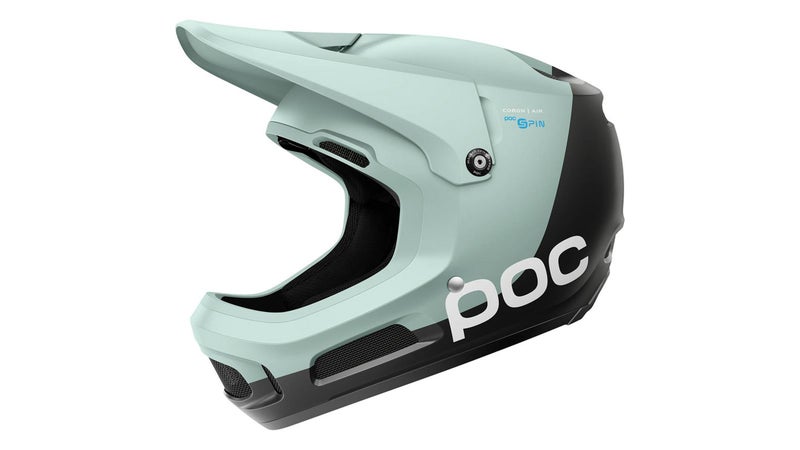
POC Coron Air SPIN��($275)
Pros: Lightweight��for a full-face model, and able to withstand��multiple impacts
Cons: Cheek-pad removal not intuitive
On aggressive downhill lines, where big drops often roll into fast, technical sections of loose rock and trees, substantial full-face protection is a necessity��and always takes precedence over breathability. But with a wide face opening and an extended chin guard that allows for increased airflow, the rids you of the need to compromise. Multiple testers praised it for its open, airy feel and excellent ventilation.
When testers found themselves pedaling uphill, yanking out the removable cheek pads enabled even more airflow and made the whole system much cooler. Be careful, though: one tester��pulled the pads in the wrong direction and ripped the foam away from the plastic.��Another��also noted that the design didn’t quite achieve the tight fit he wants when tackling hard��lines. That said, everyone loved the comfort of multiple padding-configuration options to dial in fit around the chin and cheeks.
There was consensus��that SPIN, POC’s proprietary rotational impact protection system, chattered less��than the ubiquitous Multidirectional Impact Protection System��and felt more solid. (SPIN��places a silicone gel-like membrane inside the padding, while MIPS involves a free-moving shell underneath the padding.) While the expanded polypropylene foam liner made this the only helmet in the test able to absorb multiple impacts, it still feels noticeably lighter than other full-face downhill models.
Runner-Up
The ��($280) was almost as light and scored points for a��visor that has an adjustable range and a POV camera mount, but everyone noted the lack of ventilation, which made it less than ideal��for any climbing.
Best Hybrid Helmet
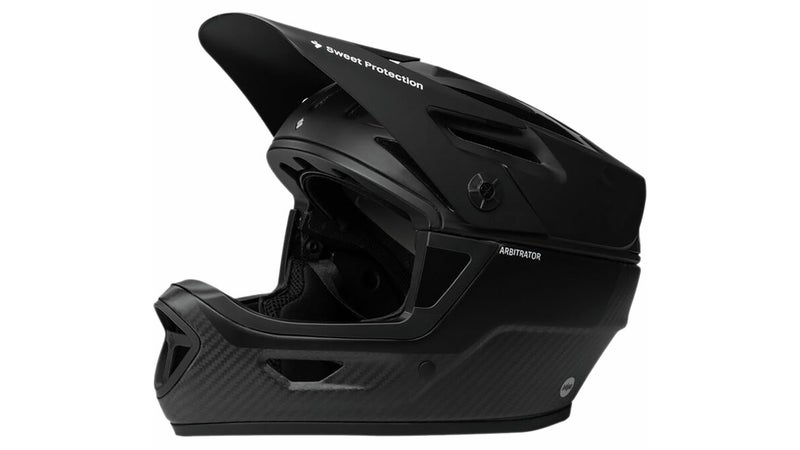
Sweet Protection Arbitrator MIPS ($300)
Pros: Secure, with a removable full-face chin guard, and better adjustability than other hybrids
Cons: A clunky chin-guard-attachment mechanism
What if you didn’t have to choose between a full-face helmet and��a trail helmet?��What if you just wanted to buy one lid for everything? The is your answer. It fits more securely, and with less play, than other hybrids, inspiring confidence on descents. “It’s light, but not too light,” said one former downhill racer, who noted that the Arbitrator feels a bit safer than Bell’s convertible helmet, the Super Air R. “I felt like I could ride standard downhill in this one,” he said. For that you can thank the rear fit dial, which most hybrid and full-face lids don’t have.
When it’s time to climb, flip a��lever in the back of the polycarbonate shell, and the carbon-fiber chin guard detaches, opening up the face for more ventilation and the ability to spit during��climbs. Testers loved the dual chin straps—a lightweight one for trail riding and a heftier one for downhill security, with webbing straps for stashing the former inside the removable chin guard��when you’re in full-face mode.
One concession with the Arbitrator is that you��have to remove the helmet to detach and install the chin guard. (The guard is one solid��piece that attaches to the bottom of the helmet, which means you can’t put it on with your head and neck already inside.) While the Arbitrator is definitely pricier��than other helmets reviewed in this test, it’s a great deal when you consider the total price of buying both a downhill and trail helmet separately.
Runner-Up
The ��($300) also made a splash, as the lightest enduro helmet of��the test. Features include��an openmouthed, fixed chin guard through which you can drink water or spit, plenty of ventilation and peripheral vision, as well as a magnetic chin strap. But despite this versatility, it falls short of the Arbitrator’s two-in-one functionality.
Best Budget Helmet
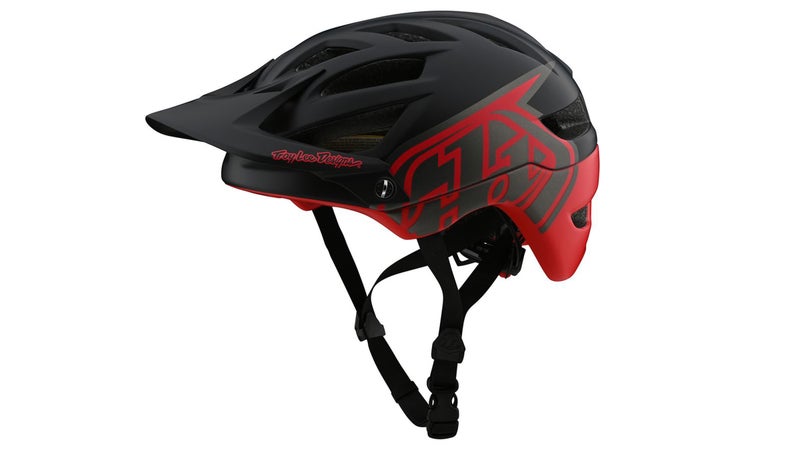
Troy Lee Designs A1 ($139)
Pros: Comfortably fits the widest��variety of head shapes
Cons:��Offers less coverage and��ventilation than similar helmets
Even with lower-priced helmets��like , you can still find top-end features, including MIPS and dial-fit systems.��One tester lauded the removable and washable padding liner. “It felt like there was a nice layer of soft foam, so I didn’t feel hard plastic all around,” he said. “I have a large head, and most helmets sit really high on me, but the A1 doesn’t. It covers the back of my head nicely.”
Eight “intake passages” draw in air for substantial ventilation, and the center hinge on the visor keeps it sitting straight. While the helmet has no��pressure points, it also lacks��a routing system to keep the straps from cutting into your ears.��That said, riders��noted that the A1 is a contender with every other trail helmet in our test—and nearly half the price.
Runner-Up
For those who want��an affordable option that can pull double duty as a road and cross-country helmet, the ��($130)��provides��more coverage than a road helmet��but less than an aggressive trail helmet.��The fit and ventilation are exceptional, and some long-distance cross-country��riders preferred it over every other helmet in the test.
How to Buy
When you start getting into the weeds on helmet technology and features, making purchase decisions can seem��harder than it��is. Here are a few main factors��to weigh.
The Type of Riding You Do Most
Consider the type of riding you’ll be doing 60 percent of the time or more. If you’re a light cross-country rider who enjoys rolling hills with wide-open scenery and not a lot of objects to crash into, ventilation and weight will be your top purchasing considerations. If you like to take chairlifts and shuttle rides to the top of your descents and avoid uphill pedaling at all costs, maximum protection should be your priority, although ventilation will still be a big factor on hot summer resort-riding days. If you want a full-face helmet that you can climb in, you’ll need to decide if a removable or fixed chin guard is the right call. Removable guards offer superior ventilation and clearance for spitting or drinking from a water bottle, but they can be a slight hassle to stow on your pack and fumble back into place on the helmet.
Comfort
Comfort is always crucial��and the biggest variable when it comes to what our testers like. Pay attention to whether the helmet you buy is right for your head shape. Brands that design helmets��for��maximum head coverage might make some models too big for those with smaller skulls, while lightweight, snug-fitting helmets can cause a lot of pressure points on bigger, rounder domes.
Rotational Impact Protection
Protective foam in helmets absorbs some of the force of direct impact to your head, but most bike falls send you barreling��to the ground at an angle. Advanced liner technologies, like MIPS or POC’s proprietary SPIN,��are designed to��disperse the force of an angular��impact by allowing the��skull to rotate within the helmet’s shell.
Every helmet on this list has a system like this. Early MIPS liners cramped the fit of helmets, but now they’ve become lower profile and less intrusive. Meanwhile, POC’s SPIN technology incorporates the rotational impact protection system into the padding itself. We aren’t able to personally��test the differences and effectiveness of these systems, but research has suggested��that they work. We��recommend picking a model that has rotational-impact features, matches your style of riding, and fits most comfortably on your head.


